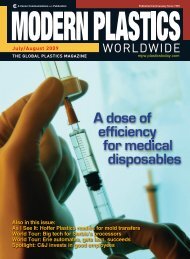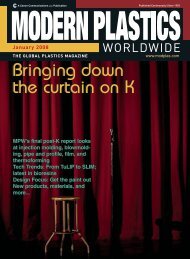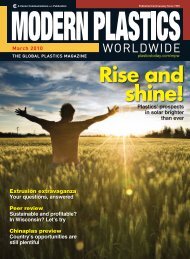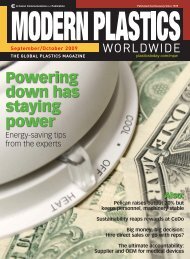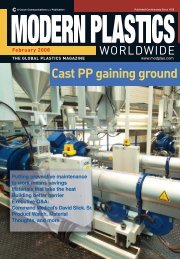amidiq - dae uptlax
amidiq - dae uptlax
amidiq - dae uptlax
You also want an ePaper? Increase the reach of your titles
YUMPU automatically turns print PDFs into web optimized ePapers that Google loves.
Abstract<br />
REVISTA MEXICANA DE INGENIERÍA QUÍMICA Vol. 6, No. 3 (2007) 295-300 AMIDIQ<br />
BIOSORPTION OF Pb (II) BY Agave tequilana Weber<br />
(AGAVE AZUL) BIOMASS<br />
BIOSORCIÓN DE Pb (II) POR BIOMASA DE Agave tequilana Weber<br />
(AGAVE AZUL)<br />
J. Romero-González 1* , F. Parra-Vargas 2 , I. Cano-Rodríguez 2 , E. Rodríguez 1 ,<br />
J. Ríos-Arana 1 , R. Fuentes-Hernández 2 and J. Ramírez-Flores 2<br />
1 Universidad Autónoma de Cd. Juárez, Instituto de Ingeniería y Tecnología,<br />
Av. Del Charro No. 610 Norte, Cd. Juárez Chihuahua, 32310, México.<br />
2 Universidad de Guanajuato, Departamento de Ingeniería Química,<br />
Noria Alta S/N, Guanajuato, Guanajuato, 36000, México.<br />
* Corresponding author: E-mail: jromero4@mainers.utep.edu<br />
Phone and fax: (656) 688-1885<br />
Recibido 22 de Junio 2006; Aceptado 16 de Julio 2007<br />
In this study, the biomass produced from the industrial residues and agricultural waste of Agave tequilana Weber<br />
(Agave azul) generated in the production of tequila, demonstrated a high potential for Pb (II) removal from aqueous<br />
solution. The biosorption capacity of Agave azul leaves biomass was evaluated in batch experiments. These<br />
experiments included pH profile, time dependence, and the determination of adsorption capacity. Time profile<br />
experiments indicated that the adsorption of Pb ions by Agave azul biomass was time-dependent. Freundlich and<br />
Langmuir isotherms were used to describe the biosorption of Pb (II) onto the Agave azul leaves biomass at 298 K<br />
and pH 5.0. The correlation coefficient for the Freundlich isotherm was much higher than the coefficient for the<br />
Langmuir isotherm, indicating that only the Freundlich models fits the data. The maximum capacity (KF) was<br />
105.52 10 -2 mole/g for Pb (II). The adsorption capacity showed by Agave azul biomass was higher than the average<br />
values reported in the literature.<br />
Keywords: biosorption, Pb(II), Agave tequilana Weber, Agave azul.<br />
Resumen<br />
En este estudio, la biomasa producida de los residuos industriales y el desecho agrícola del Agave tequilana Weber<br />
(Agave azul) generados en la producción de tequila, demostró un alto potencial para la remoción de Pb (II) de<br />
soluciones acuosas. La capacidad de biosorción de la biomasa de las hojas de Agave azul fue evaluada en<br />
experimentos en lote. Estos experimentos incluyeron perfil de pH, dependencia del tiempo y la determinación de la<br />
capacidad de adsorción. Los experimentos de dependencia del tiempo indicaron que la adsorción de los iones de<br />
Pb(II) por la biomasa de Agave azul fue dependiente del tiempo. Las isotermas de Freundlich y Langmuir fueron<br />
usadas para describir la biosorción del Pb (II) sobre la biomasa de las hojas del Agave azul a 298 K y un pH de 5.0.<br />
El coeficiente de correlación para la isoterma de Freundlich fue más alto que el respectivo coeficiente para la<br />
isoterma de Langmuir, indicando que solo el modelo de Freundlich describe los datos obtenidos. La máxima<br />
capacidad (KF) fue 105.52 10 -2 moles/g para Pb (II). La capacidad de adsorción mostrada por la biomasa del Agave<br />
azul fue más alta que el valor promedio de los valores reportados en la literatura.<br />
Palabras clave: biosorción, Pb (II), Agave tequilana Weber, Agave azul.<br />
1. Introduction<br />
Continuous discharges of heavy metals close<br />
to densely populated areas threat urban ecosystems<br />
and human health (Altindag and Yigit, 2005, Kar and<br />
Misra, 2004, Tylko et al., 2005). Due to that, local<br />
and federal authorities derived resources to remove<br />
heavy metals and other pollutants from the<br />
environment. Scientists and engineers have recently<br />
found that several biomaterials can be used to<br />
eliminate heavy metals from polluted soil and water<br />
(Davis et al., 2003, Ahluwalia and Goyal, 2006,<br />
Goyal et al., 2003). This technology has a significant<br />
connotation when the heavy metal contaminants<br />
exist at trace concentrations or where the current<br />
cleaning methods become inefficient and relatively<br />
expensive (Martínez et al., 2000, Chuah et al., 2005,<br />
Ahluwalia, and Goyal, 2005).<br />
As observed with other materials, the<br />
biosorbent process reaches an equilibrium between<br />
Publicado por la Academia Mexicana de Investigación y Docencia en Ingeniería Química A.C.<br />
295




